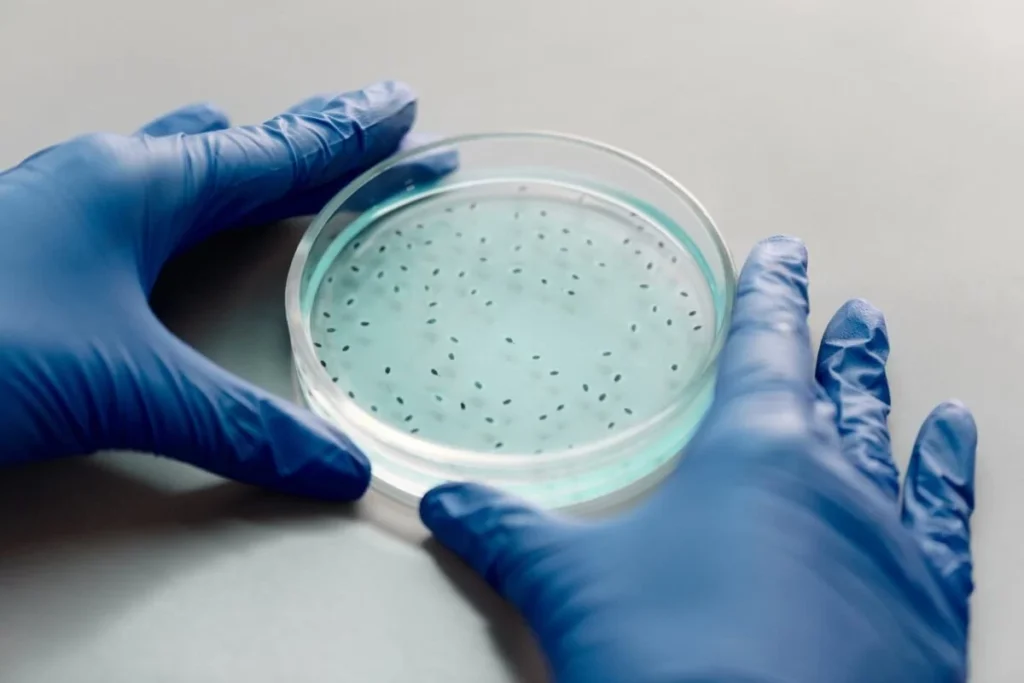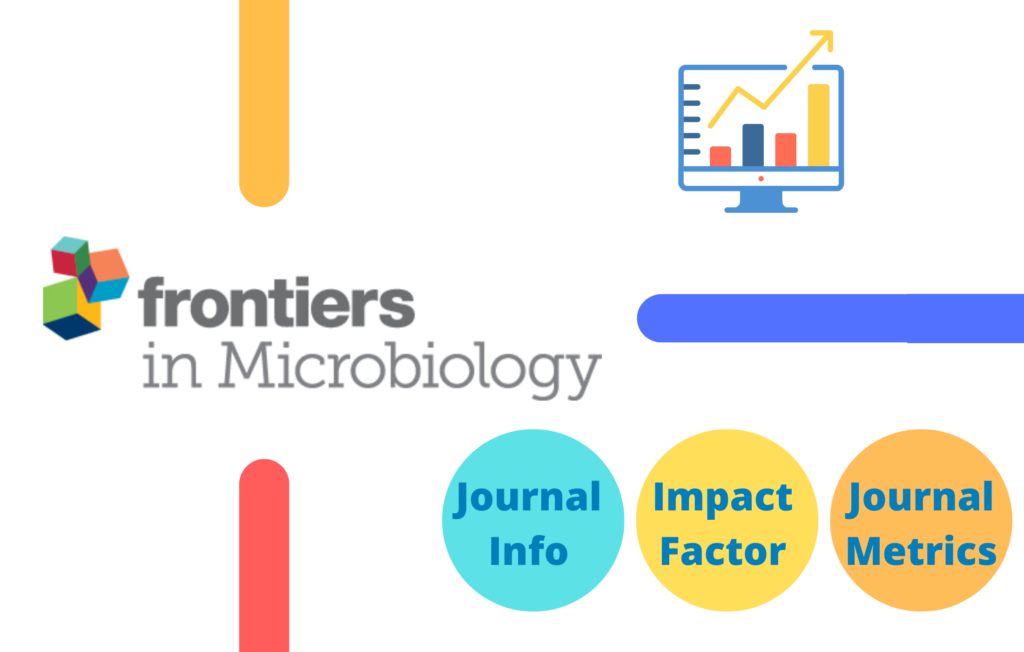In the realm of scientific research, the impact factor stands as a beacon, guiding the evaluation of a journal’s significance within its field. Within the diverse spectrum of disciplines, microbiology emerges as a cornerstone, unveiling the intricate workings of microscopic life forms and their profound implications on various ecosystems, human health, and industry.
Delving into the frontiers of microbiology impact not only unveils the trajectory of scientific progress but also underscores the pivotal role of this field in shaping our understanding of the world around us.
The Essence of Microbiology Impact Factor

At its core, the impact factor serves as a metric, quantifying the average number of citations received by articles published in a particular journal over a defined period. For microbiology, this metric transcends mere numbers, encapsulating the collective endeavors of researchers, the innovation of scientific inquiry, and the dissemination of knowledge. Journals with higher impact factors often wield greater influence, attracting top-tier research and fostering intellectual exchange within the microbiological community.
The impact factor is calculated annually by Clarivate Analytics, based on data from the Web of Science database. It involves dividing the number of citations in the current year to articles published in the previous two years by the total number of articles published in those two years. This quantifies the average impact of a journal’s articles and helps researchers decide where to publish their work for maximum visibility and influence.
The Dynamics of Microbiological Research

Microbiology, with its multifaceted dimensions, continually pushes the boundaries of scientific inquiry. From elucidating the mechanisms of microbial pathogenesis to harnessing the potential of beneficial microbes in various industries, the breadth of microbiological research is vast and ever-evolving. Consequently, journals specializing in microbiology cater to a diverse array of topics, ranging from fundamental microbial physiology to cutting-edge biotechnological applications.
The field of microbiology has witnessed significant advancements in recent years, driven by technological innovations such as high-throughput sequencing, advanced imaging techniques, and computational modeling. These tools have revolutionized our understanding of microbial diversity, community dynamics, and metabolic pathways, opening new avenues for exploration and discovery.
High-throughput sequencing has enabled researchers to rapidly and comprehensively analyze microbial genomes, metagenomes, and transcriptomes. This technology has unveiled the vast diversity of microbial life, revealing previously unknown species and their functional roles in various environments.
Advanced imaging techniques, such as super-resolution microscopy and cryo-electron microscopy, have provided unprecedented insights into the structural and functional organization of microbial cells. These techniques have elucidated the intricate interactions between microbes and their environments, including host-pathogen interactions.
Computational modeling has become an indispensable tool for integrating complex datasets and simulating microbial behaviors. Models of microbial communities and metabolic networks are helping researchers predict responses to environmental changes, optimize biotechnological processes, and develop new therapeutic strategies.
Frontiers in Microbiology
Within the expansive landscape of microbiology journals, Frontiers in Microbiology stands out as a beacon of innovation and excellence. Launched in 2010, Frontiers in Microbiology has rapidly ascended the ranks, emerging as one of the premier platforms for disseminating groundbreaking research in the field. With its rigorous peer-review process, interdisciplinary approach, and open-access model, Frontiers in Microbiology embodies the ethos of scientific progress, fostering collaboration and driving discovery across the microbiological spectrum.
Frontiers in Microbiology encompasses a wide range of specialty sections, each dedicated to a specific area of microbiological research. From microbial ecology and evolution to infectious diseases and host-microbe interactions, the journal provides a comprehensive forum for researchers to share their findings and engage in scholarly discourse. Some notable sections include:
Microbial Physiology and Metabolism
Focuses on the biochemical and physiological processes of microorganisms, including metabolic pathways, regulatory mechanisms, and responses to environmental stressors.
Microbial Genomics and Evolution
Explores the genetic and evolutionary dynamics of microbial populations, including genome evolution, horizontal gene transfer, and microbial adaptation to diverse environments.
Microbial Biotechnology
Highlights the application of microbial processes and products in industrial, agricultural, and environmental settings. Topics include bioremediation, biofuel production, and microbial synthesis of valuable compounds.
Infectious Diseases
Investigates the mechanisms of microbial pathogenesis, host immune responses, and strategies for the prevention and treatment of infectious diseases. This section encompasses studies on bacteria, viruses, fungi, and parasites.
Unveiling the Impact Factor
The impact factor of a journal serves as a barometer of its influence and prestige within the scientific community. As of 2023, Frontiers in Microbiology boasts an impressive impact factor of 5.640, indicative of its pivotal role in shaping the discourse and advancement of microbiological research. This metric not only reflects the quality and relevance of the articles published within the journal but also underscores its contribution to the broader scientific landscape.
The high impact factor of Frontiers in Microbiology is a testament to the caliber of research published within its pages and the enduring impact of its contributions to the field. It serves as a validation of the journal’s commitment to excellence and its role as a leading platform for scientific inquiry in microbiology.
Navigating the Frontiers
In the quest for scientific enlightenment, researchers and scholars alike navigate the frontiers of microbiology, driven by curiosity, innovation, and a relentless pursuit of knowledge. The impact factor serves as a guiding light, illuminating the path towards journals of excellence and facilitating the exchange of ideas that fuels scientific progress. As we continue to probe the mysteries of the microbial world, the impact factor remains a steadfast companion, offering insights into the evolving landscape of microbiological research and the transformative power of scientific inquiry.
The impact factor also plays a crucial role in academic and professional advancement. Researchers often seek to publish in high-impact journals to enhance their visibility, attract funding, and secure career opportunities. Institutions and funding agencies frequently use impact factors as one of the criteria for evaluating research performance and allocating resources.
Conclusion
The frontiers of microbiology beckon with promise and possibility, inviting researchers to embark on a journey of discovery and enlightenment. Within this dynamic landscape, the impact factor stands as a testament to the enduring legacy of scientific endeavor, reflecting the collective efforts of the microbiological community in unraveling the mysteries of microscopic life. As we chart a course towards new horizons, let us heed the call of the frontiers, embracing the challenges and opportunities that lie ahead in our quest for understanding and innovation.
